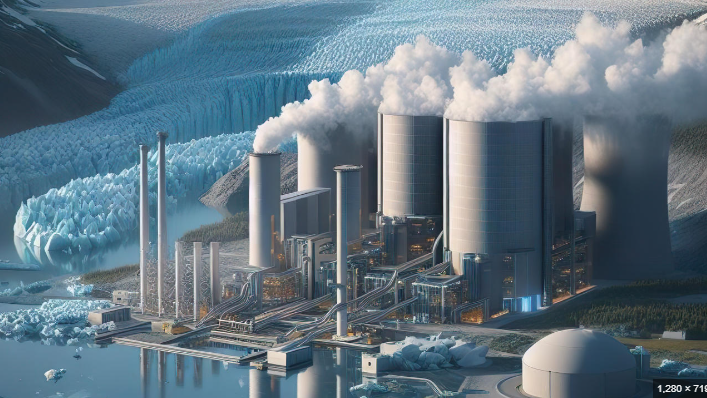As nations race to decarbonize, geothermal energy is re-emerging as a compelling option for stable, low-emission, 24/7 power. Unlike solar or wind, geothermal energy is available around the clock, making it uniquely suited for critical applications—from data centers in the U.S. to off-grid mini-grids in Africa.
While upfront costs are higher compared to other renewable energy sources, largely due to the need for extensive site research and drilling— the investment is often justified by the technology’s unmatched reliability. Once operational, a geothermal plant delivers continuous, 24/7 power with minimal disruption, ensuring strong long-term returns.
✅ Strengths of Geothermal Energy
- Uninterrupted Baseline Power: Generates electricity 24/7 regardless of weather or daylight.
- Extremely Low Emissions: Among the lowest lifecycle emissions of any energy source.
- Dual Functionality: Provides both heating and cooling, ideal for buildings and data centers.
- Minimal Land Footprint: Requires less land than wind or utility-scale solar farms.
- High Reliability and Longevity: Plants can operate for 30–50+ years with low maintenance.
⚠️ Limitations and Challenges
- High Upfront Cost: Drilling and exploration are capital-intensive.
- Location-Dependent: Best suited for geologically active regions or those with subsurface heat anomalies.
- Technical Expertise Needed: Requires specialized engineering, especially in new markets.
- Long Development Timelines: Exploration to commissioning can take several years.
🔄 How It Compares to Other Renewable Sources
| Feature | Geothermal | Solar PV | Wind | Hydro |
|---|---|---|---|---|
| Availability | 24/7 | Daylight only | Variable | Seasonal/steady |
| Emissions | Very low | Very low | Very low | Low |
| Reliability | High | Medium | Medium | High |
| Land use | Low | High | High | Medium |
| Start-up Cost | High | Low | Medium | High |
| Suitability for Data Centers | ✅ Yes | ⚠️ Needs storage | ⚠️ Needs storage | ⚠️ Depends on region |
🌍 Global Use Cases
United States: Clean Power for Data Centers and Critical Infrastructure
Geothermal energy is already feeding the grid in states like California, Nevada, and Utah, with growing interest in next-gen closed-loop systems. Tech giants including Google and Microsoft are piloting geothermal for hyperscale data centers, drawn by its 24/7 uptime, low carbon footprint, and cooling potential.
Additionally, military bases, hospitals, and cold-climate campuses are deploying geothermal for heating and backup power, citing its energy resilience and low volatility in pricing.
🌍 African Context: Opportunity for Resilient and Sustainable Growth
East Africa: Tapping the Rift Valley
Countries like Kenya and Ethiopia sit on rich geothermal reserves and are scaling up to meet both domestic demand and export potential. Kenya, for example, gets over 45% of its electricity from geothermal—supporting cities, industries, and green manufacturing.
Nigeria and West Africa: Emerging but Promising
While deep geothermal prospects are limited, shallow geothermal systems (e.g., ground-source heat pumps) are viable for:
- Data centers, where efficient cooling is vital.
- Urban buildings and hospitals, reducing reliance on diesel generators.
- Industrial zones and campuses, as part of hybrid microgrid solutions (solar + geothermal).
In Nigeria—where grid instability is a major economic bottleneck—geothermal offers a clean, steady, and scalable option to power essential services and reduce diesel dependence.
🔍 Sidebar: Why Geothermal Costs Vary by Location
Areas with visible geothermal surface activity — such as hot springs, geysers, or volcanic regions — allow for shallower drilling and lower exploration risk, significantly reducing upfront costs and project timelines. Examples include Iceland, Kenya’s Rift Valley, and California’s Geysers region.
In contrast, sites without surface indicators require deep drilling and extensive surveys, increasing costs and project risks. Therefore, geothermal energy development is most economically feasible where geological conditions offer accessible heat reservoirs.
🔧 Versatile Applications Beyond Electricity
- Cooling for Data Centers: Ground-source cooling reduces energy intensity of large computing facilities.
- District Heating/Cooling: Efficient in dense urban areas or campuses.
- Desalination & Agro-industrial Drying: Low-temperature geothermal can power water purification or food processing in arid zones.
- Green Hydrogen: Provides the heat and electricity needed for electrolysis.
🔋 A Strategic Fit for Energy Security and Climate Goals
Geothermal energy addresses the two pillars of modern energy strategy:
- Sustainability: As a net-zero power source with minimal land and resource footprint.
- Reliability: A constant supply ideal for economies that can’t afford blackouts—whether it’s digital infrastructure in California or hospitals in Lagos.
📌 Final Word
In an age where energy needs are rising and climate deadlines loom, geothermal is not just a niche solution—it’s a strategic asset. With targeted investment, cross-sector partnerships, and technology transfer, geothermal can play a foundational role in the global energy transition—quietly powering the systems the world relies on most.
Glacial Geothermal Power Plant by M Holtsmeier on DeviantArt
